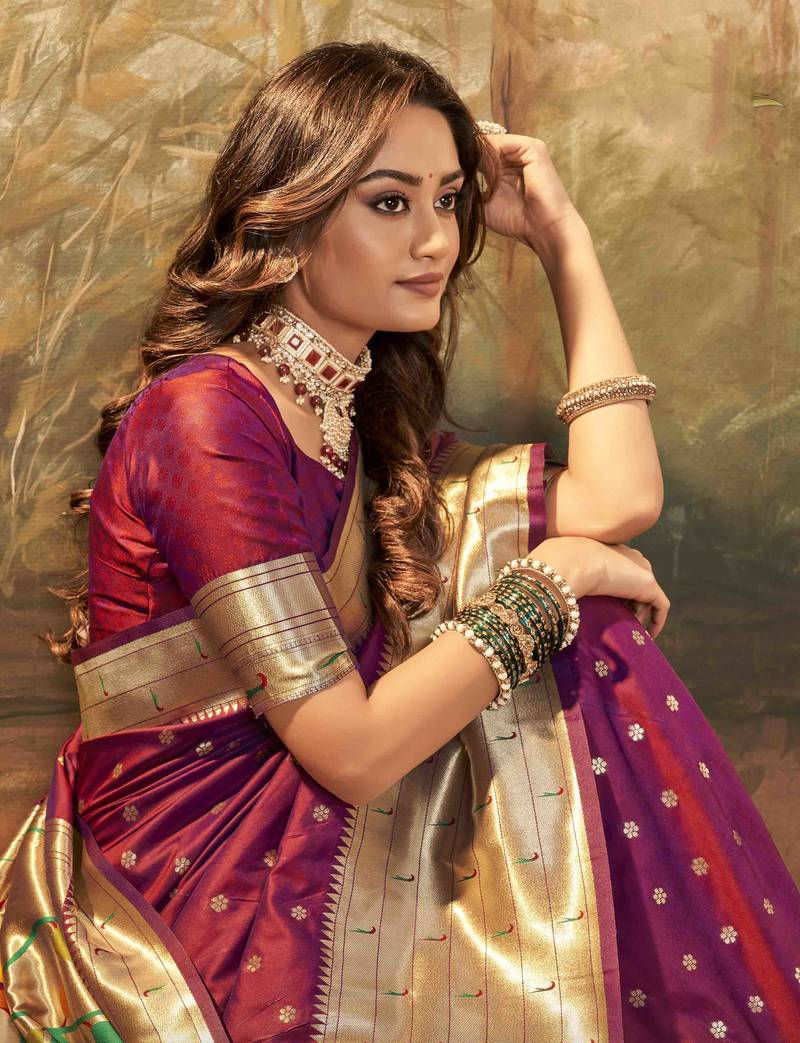A Closer Look at the Traditional Sarees Collection
- julia sparkel

- Aug 12
- 3 min read
India is a land of mixed cultures. 29 states have 29 different cultures. In such a multi-cultural country, it is needless to say that the attire and the dressing styles of each culture are different. However, the attire that brings the whole country into one section is a saree. A saree is a 6-yard-long combination of comfort, elegance, class and sophistication. Every Indian woman looks her best when clad in the 6 yards of perfection. Just like the different cultures of each state, each state has its own regional tradition and its own style of saree. Given below is a list of the most traditional sarees of each state.
Let us start from the top.

North India
When it comes to North India, the first state that comes to mind is Jammu and Kashmir. The most traditional saree of this state is Jamawar. Here, Jama means robe, and war means yard. History says that these types of sarees were worn by the royalty. Primarily made ofthe best quality silk, even Jamawar shawls were also equally popular amongst the royals. Even today, many Jamawar sarees have matching shawls attached to them as a style statement and also to embellish the entire package.
Another extremely popular and remarkable saree is the Lucknowi Chikankari Saree, a traditional Lucknow masterpiece. These sarees have extremely intricate thread embroidery all over the body of the saree, giving it an aristocratic look. The sarees are available in many colours, usually pastel shades.
East India
In this area, the most famous land of saree is Bengal, which itself produces more than 3 types of traditional sarees. The commonest traditional saree from this state is Taant, literally meaning “made on the loom”. They are woven cotton sarees and are known for their crisp muslin finish. They are also embellished with light zari threads, woven with many designs. Other famous types are Kantha stitch and Baluchari sarees, mostly made of refined silk.
Muga sarees from Assam are woven from silk, which is only available in Assam. This type of saree is known for its inherent golden colour, which does not require dying. The Mekhla Chaadar is the most famous and traditional saree in Assam, which is a two-piece saree in two piece.
South India
The most popular traditional saree is this region is the Kanjeevaram saree, which is highly popular all over India. Woven in Kanchipuram, Tamil Nadu, these sarees are known for their gold-dipped silver thread and the premium quality silk they’re woven from. The heavier the silk, the better is the quality of the saree.
Pochampally Ikkat sarees are also very popular in these areas. Mysore silk sarees are another traditional variant of South Indian silk sarees.
West India
Pathani sarees from Aurangabad, Maharashtra, are the most popular sarees from this region. They are woven in bold colours like magenta and peacock green. Various motifs are made all over the saree and are woven with pure silk and strings of pure gold.
Bandhni sarees, more commonly known as tie-and-dye designs, are a popular master from Gujarat. In the tie-and-dye pattern, elaborate designs are made all over the sarees, which are woven in premium quality silk.
Patola sarees are also famous, known for their intricately woven patterns and the mandatory five-colour designs.
Summary
If you are a saree lover, you must possess all or most of these traditional masterpieces as they are all a blend of pure elegance and beauty through their quality, designs and vibrancy of colours.



Comments